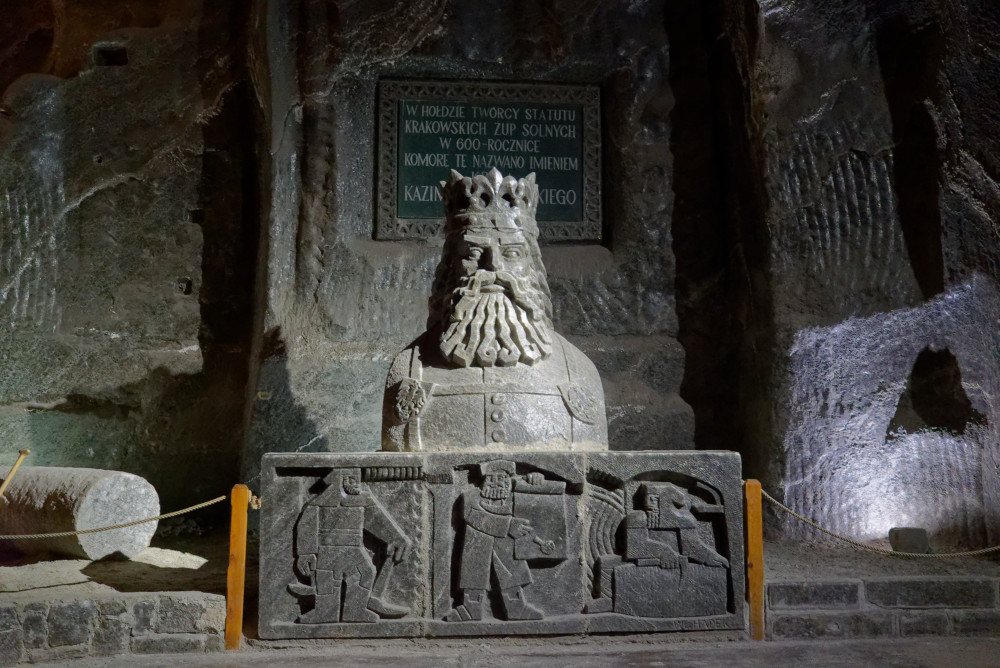
Underground, carved out of salt
We caught bus 304 to the Wieliczka Salt Mine for our 11:30 tour which I’d booked online the previous day. It’s a massive complex and visited by over a million people annually with tour groups in several languages. Compared with a coal mine it was clean and spacious. Excavated from the 13th century, due to falling salt prices commercial salt mining was discontinued in 1996.
The Wieliczka Salt Mine is now a UNESCO WORLD Heritage Site. Its attractions include the shafts and labyrinthine passageways, displays of historic salt-mining technology, an underground lake, four chapels and numerous statues carved my the miners, and more recent sculptures by contemporary artists.
There were food options underground but noisy with so many school groups so we headed for the bistro on the surface, which despite the inviting signs was closed. We spotted people eating on the terrace at the Grand Sal Hotel in the grounds and they fed us well with their cauliflower steak with vegan coffee demi-glace, pomegranate salad mix and smoked tofu. A coffee salad dressing sounded wacky but we gave it a try and liked it.
The bus back was standing room only, we took it into the city so we could shop for tomorrow’s lunch, when we’ll hit the road again. After walking back, we gave the bikes a quick clean and oil and ate at the nearby Mazaya Mediterranean vegetarian restaurant, moussaka with Bulgaria wheat made a welcome change. I tried a bottle of Fortuna Czarne, a dark beer with kola tree nut extract which imparted a sweet liquorice flavour.